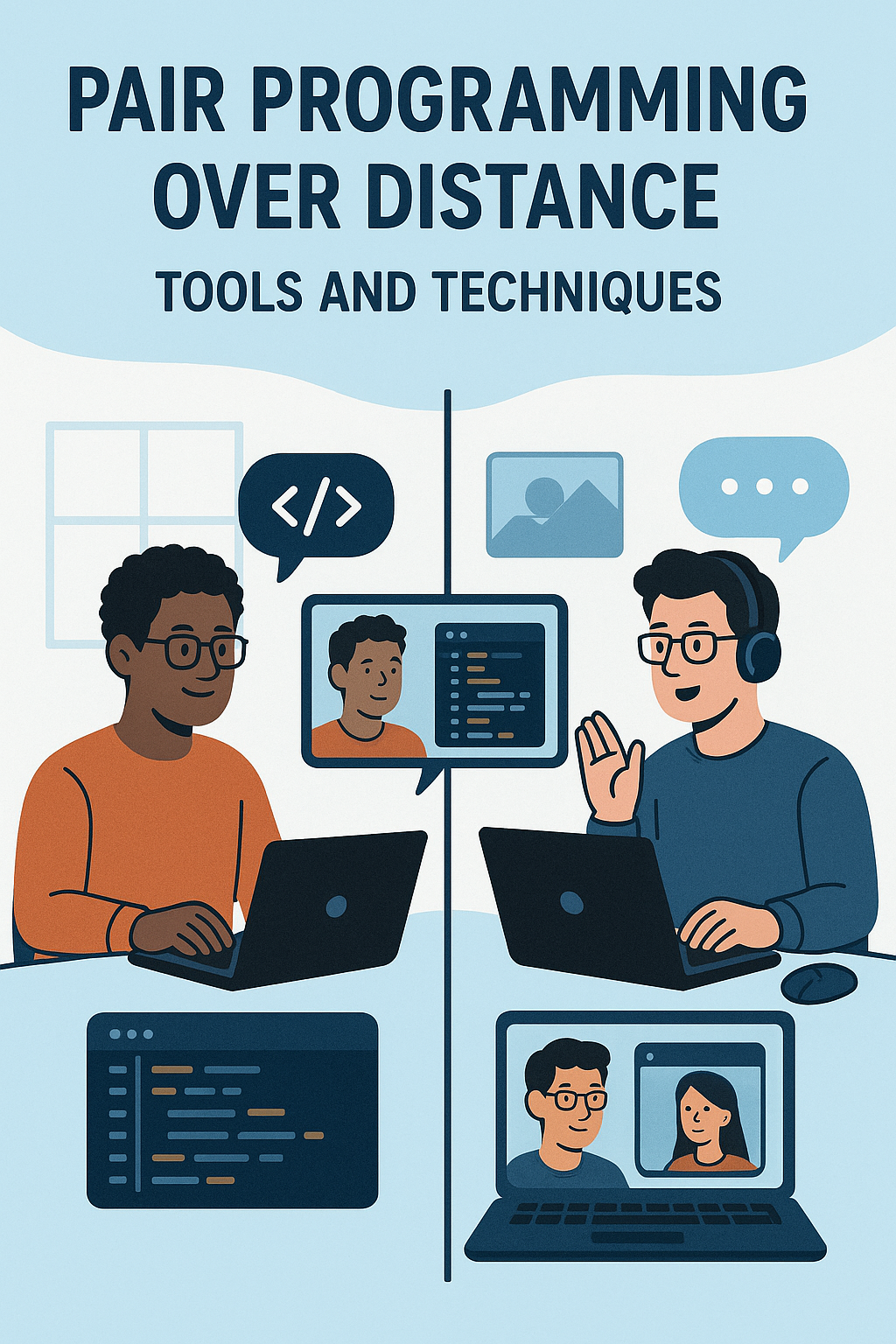
Introduction
Pair programming has always been a powerful way for developers to learn, share knowledge, and solve complex problems faster. Today, however, remote work is the norm. Teams collaborate across time zones, countries, and continents. Therefore, knowing how to pair program effectively over distance is essential for modern software development. In this post, we’ll cover the best tools and proven techniques to help you collaborate smoothly, even when your partner is miles away.
Why Remote Pair Programming Works
Although it may seem challenging at first, remote pairing can be just as effective as being in the same room. With the right setup, it improves code quality, reduces bugs, and strengthens team communication. Additionally, it helps junior developers learn faster while giving senior developers opportunities to mentor without disrupting their schedule.
Benefits
- Real-time knowledge sharing
- Faster problem-solving
- Fewer handoff misunderstandings
- Better code quality through continuous review
- Stronger team culture across distance
Essential Tools for Remote Pair Programming
1. VS Code Live Share
VS Code Live Share enables two or more developers to work inside the same project without cloning it. You edit files, share terminals, and debug together in real time.
Why use it: Low friction, easy setup, and fast collaboration.
Bonus: You can share servers, terminals, and even audio.
2. JetBrains Code With Me
If your team uses WebStorm, IntelliJ IDEA, PyCharm, or other JetBrains IDEs, Code With Me is a great alternative. It supports shared editing, navigation, and debugging.
Why use it: Excellent for enterprise environments and complex codebases.
3. Tuple
Tuple is designed specifically for remote pair programming. It focuses on low-latency screen sharing, smooth control switching, and excellent audio quality.
Why use it: Minimal lag and high-quality collaboration for serious pairing sessions.
4. GitHub Codespaces
Codespaces provides an instant cloud-based development environment. When combined with Live Share, it allows anyone to join your session with zero setup.
Why use it: Perfect for onboarding teammates or working from lightweight devices.
5. Slack Huddles / Zoom / Google Meet
Sometimes, traditional screen sharing works best, especially when explaining architecture or discussing broader ideas.
Why use it: Simple, reliable, and available to almost every team.
Techniques for Effective Remote Pairing
Choose a Pairing Style
Different tasks require different pairing approaches.
- Driver–Navigator: One person writes code while the other reviews, suggests improvements, and thinks ahead.
- Ping-Pong Pairing: One writes a failing test, the other writes code to make it pass, and they switch.
- Strong-Style Pairing: “For an idea to go from your head into the computer, it must go through someone else’s hands.” Great for teaching.
Choosing the right style improves clarity and avoids stepping on each other’s workflow.
Communicate Actively
Clear communication is essential when pairing remotely. Use phrases like:
- “Let’s pause here and look at that logic.”
- “I think we missed an edge case.”
- “Before coding, should we outline the approach?”
Additionally, switching roles regularly keeps both developers engaged.
Keep Sessions Focused
Remote pairing works best in shorter, well-defined sessions.
- Use 30–45 minute blocks
- Take breaks between sessions
- Define goals before starting (e.g., “Implement feature X,” “Fix the bug in auth flow”)
As a result, you maintain energy and avoid mental fatigue.
Share Context Frequently
When working remotely, misunderstandings can happen more easily. Therefore, it’s helpful to summarize the plan regularly and confirm assumptions before writing code. You can even write down small notes or key steps in a shared workspace or snippet tool.
Use Git Effectively
Commit often. Push frequently. Use feature branches.
Small commits help both developers stay aligned and make reviewing progress easier.
Best Practices for Smooth Collaboration
- Ensure strong internet connection and proper audio setup
- Use noise-canceling headphones for clearer communication
- Turn on your camera if possible — nonverbal cues matter
- Disable notifications during sessions
- Share your terminal only when necessary
- Use pair-friendly keyboard shortcuts (e.g., multi-cursor commands in VS Code)
Final Thoughts
Remote pair programming is more than a workaround for distributed teams — it’s a highly effective way to collaborate, learn, and write better code. When you combine the right tools with structured techniques, pairing becomes smoother, faster, and even more enjoyable. Start with small sessions, build a routine, and refine your workflow with your partner. To continue improving your development workflow, check out Top VS Code Extensions for Full-Stack Developers (2025 Edition). For additional tool options, explore the official VS Code Live Share documentation.